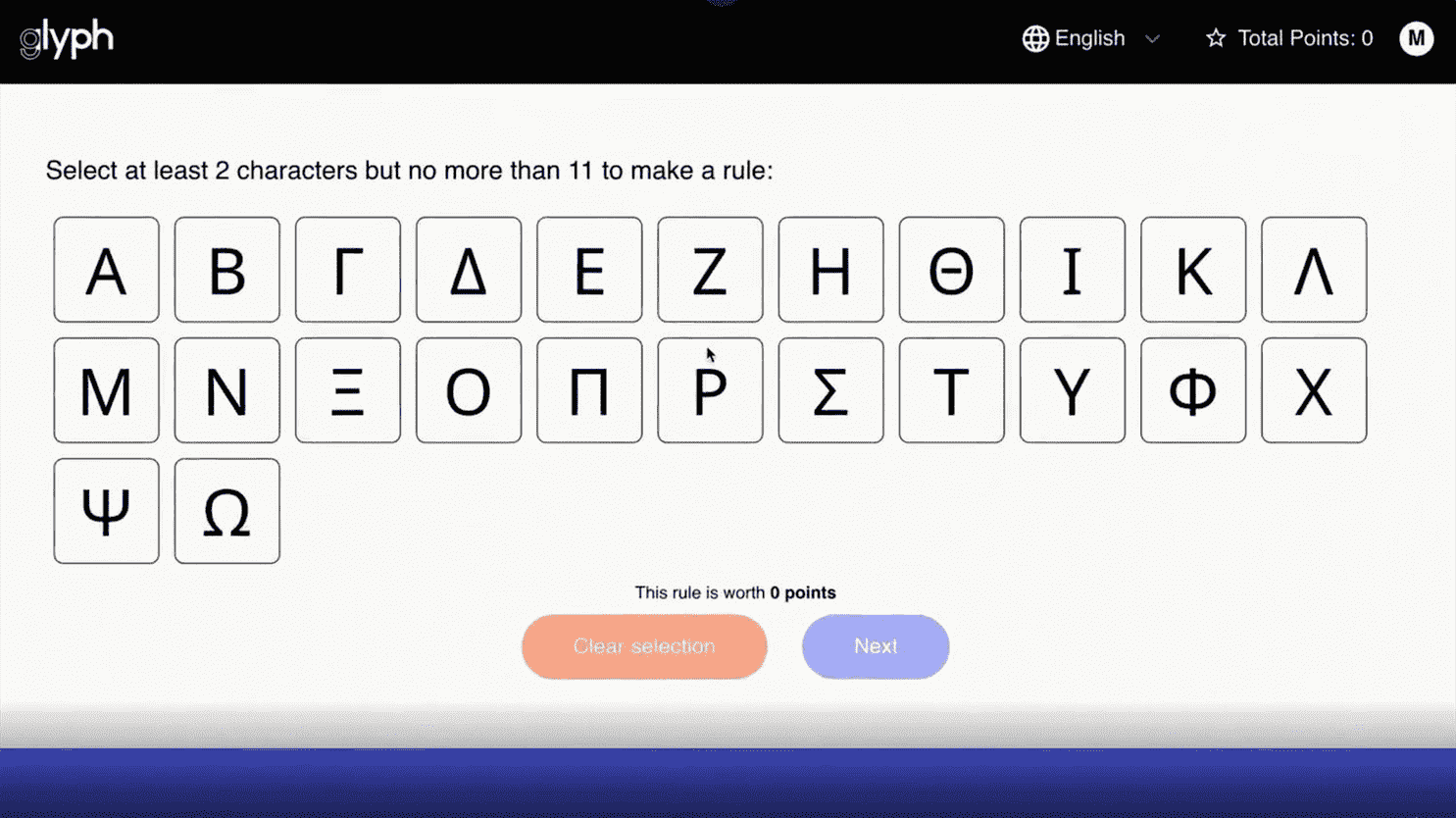Advancing knowledge through a game is what researchers are proposing, in particular French people belonging to the National Center for Scientific Research (CNRS). They have just put software online to compare writing systems around the world, accessible in a fun way. Glyphthat’s its name, is therefore a participatory science video game.
The principle is simple: you observe on the screen an alphabet or a list of graphic characters, which you know or not. You must then define rules that classify these symbols. For example: in our alphabet, the design of the T, H and L includes a right angle. It can be a ranking rule. Obviously, the more letters or symbols the rule concerns, the more points it earns you. And if no one before you has issued this rule, that’s a bonus!
“The goal is to explore the diversity of letterforms in the writing system around the world”explains Olivier Morin, CNRS researcher at the University of Paris Science and Letters, currently seconded to the Max Planck Institute in Germany. “There is relatively little research on the shape of letters compared to that of sounds, phonology. In this area, there has been extremely solid work for a hundred years. On the form of letters, on the other hand, there are some targeted studies, for example on the evolution of lowercase letters in the 8th century, but there is no general theoretically based comparative approach.
The objective of Glyph is thus to use the collective intelligence and to leave the most latitude and freedom possible to the players so that they create their own classification. “They can totally decide that their filing rule is that some letters look sad and some don’t, as long as they’re consistent and can reproduce it. And if others are d agreement with them, we can validate it and include it in our typology”says Olivier Morin.
The researchers are giving themselves six months to collect as many rules as possible, which will then be studied and sorted using algorithms. These will make it possible to extract the most structuring principles to succeed in classifying these writings, a little like birds or trees. Ultimately, the researchers want to be able to answer a certain number of questions such as those quoted by Olivier Morin: “Can we guess the sound that the letters encode simply by looking at them? For example, we can wonder if vowels are more similar to each other than consonants.”
For the players, there is nothing else to gain than the pleasure of participating in the advancement of science. The game is obviously free and to play, all you have to do is click here.
